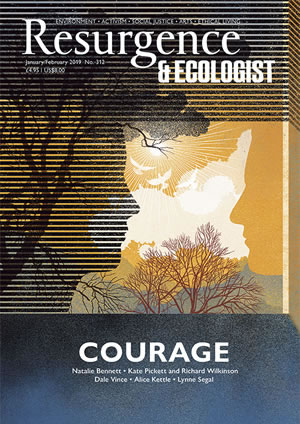“I will not lose touch with Nature. This is vital. I believe in immanence, in the oneness of living things. Maintaining that faith will carry you through the hardest times.” This is Horatio Clare’s hope and birthday wish in early September, anticipating the approach of winter with its potential to trigger a recurrence of seasonal depression. Determined that this year will be different from the last, the author keeps his winter journal as a lifeline and refuge, declaring it a “torch raised” against the winter and its “introverted darkness”.
The bright flame of Clare’s prose celebrates the “double spirit” of the season, dancing between light and shadow, charged with an animistic energy as occasionally brutal as it can be dazzling and enchanting. There is an exquisite clarity in his lyrical evocation of its subtle colours, textures and scents: days “bright as a magpie’s cackle”, clouds “scratched pale blue and wuthering white”, the sun “a glittering, blintering blaze”, snowdrops “fat as pearls” and the “icy flare of absence”, which is the smell of winter.
In its elemental drama, myth and magic shared in “a blizzard of stories”, family and friends gather together in a spirit of solidarity and communion, as the winter closes in. Clare’s depictions of seasonal gatherings are full of warmth, tenderness and poignant memories, including his childhood in Wales with his mother and brother in their “mighty little army” of three.
As people are drawn together, they reflect on the important aspects of their lives and the simple joys of living in the moment. Clare recognises these healing and restorative qualities of the natural world in winter as echoes of its “reductions and parings”, which, just like the sea, have the power “to draw out and rearrange our anxieties in simpler patterns”. Sadly, as winter progresses and his depression takes hold, focusing inward becomes a “cruel and sardonic inversion of the idea of living in the moment”, every moment experienced as a punishment.
He identifies closely with the poet Edward Thomas, a fellow sufferer, and the poetic outpouring of his winters: “It is so easy to feel for him and with him that it is hard to read him.” Clare’s account of his all-consuming ill-health can similarly be almost too painful to read at times, alleviated by the light of his loved ones shining ever brighter, particularly Rebecca and his young son, Aubrey, an embodiment of the joy of living in the moment, “springy with thrill” and full of ceaseless, brilliant questions.
In response to Rebecca’s, “We can’t breathe … Aubrey and I can’t breathe,” Clare finally takes action to remedy the suffocating nature of his depression, seeks professional help, is diagnosed as cyclothymic and pointed in the direction of a variety of natural supplements. Relieved that he is finally “coming through”, he ends the book rather abruptly with his reassurance that it is the flame, not the shadow, that remains the legacy of winter. After being taken on such a deeply personal and emotionally challenging journey, readers might find themselves still lingering in the shadows for a while.
A clearer legacy is the light the book shines on the painful, debilitating and sometimes devastating experience of living with depression, not just for sufferers, but for those closest to them, and the importance of seeking professional help, diagnosis, and appropriate support. It illuminates too, how so much of modern life disrupts our natural and seasonal rhythms and how vital it is for us all to strengthen our connection with Nature and live in closer harmony with those rhythms again.






